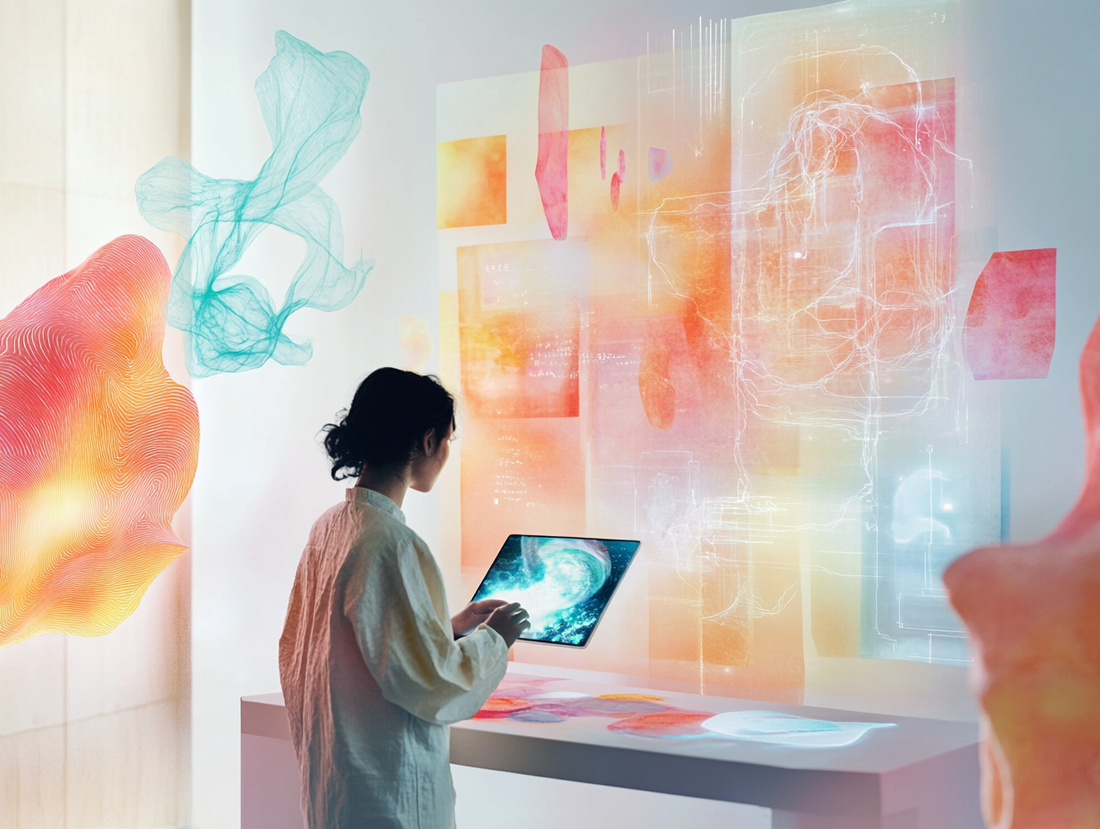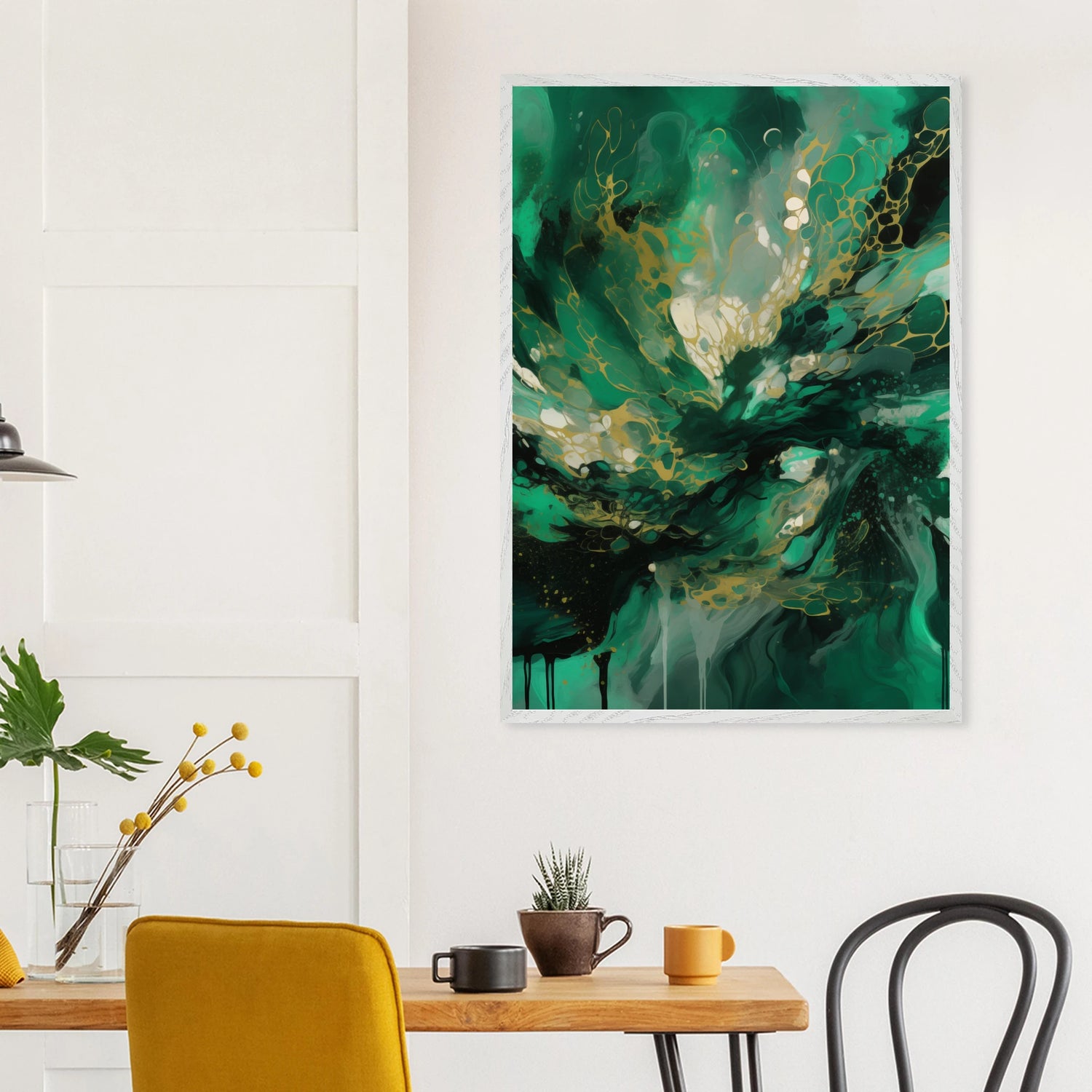
The Thrill of Combining AI and Art: Creativity Meets Unpredictability
Share
The intersection of artificial intelligence (AI) and art is a playground for creativity, exploration, and delightful surprises. As more people dive into AI-generated art tools, one recurring sentiment emerges: the process is not just about the final image; it’s about the journey. What makes combining AI and art so enjoyable? Let’s explore the factors that fuel this creative joy, from the unpredictable outcomes to the art of refining prompts.
1. The Magic of Unpredictability
One of the most captivating aspects of using AI for art is the element of surprise. You can craft a detailed prompt, imagining the outcome in your mind, but the AI might interpret it in a way you never expected. A prompt for "a serene forest" could return anything from a glowing, mystical woodland to a surreal dreamscape with trees made of crystal. This unpredictability transforms each prompt into an exciting experiment—like unwrapping a gift, you never truly know what you’re going to get.
This randomness doesn’t just entertain; it also sparks new ideas. Artists often find inspiration in the unexpected directions the AI takes, leading them to explore themes and styles they might not have considered on their own.
2. The Art of Refining Prompts
Creating AI art isn’t a passive experience; it’s an iterative process. The first attempt might yield an image that’s close to your vision but not quite there. That’s where the fun of tweaking prompts comes in. Adjusting a single word—switching "bright" to "vivid," or "stormy" to "brooding"—can produce dramatically different results.
Refining prompts is like having a conversation with the AI. You describe your vision, see how the AI responds, and adjust your language to align the output with your imagination. This back-and-forth encourages experimentation, making the creative process dynamic and engaging.
3. Endless Exploration of Styles
AI tools are incredibly versatile, capable of mimicking countless artistic styles or inventing entirely new ones. Whether you’re drawn to surrealism, minimalism, abstract art, or hyper-realistic scenes, there’s always a new aesthetic to explore. By adjusting prompts to include specific styles or techniques—like "inspired by Impressionism" or "with geometric patterns"—users can push the boundaries of their creativity.
The ability to mix styles also opens doors to unique, hybrid aesthetics. For example, combining "Baroque elegance" with "futuristic cyberpunk" in a prompt could result in an artwork that blends old-world opulence with modern tech motifs. The possibilities are virtually limitless.
4. Collaboration Between Human and Machine
AI-generated art is not about replacing human creativity—it’s about enhancing it. As an artist, you guide the process by crafting prompts and making selections, while the AI acts as a partner, interpreting your ideas in unexpected ways. This collaborative dynamic fosters a sense of co-creation that’s deeply rewarding.
Moreover, the process challenges artists to think differently. Instead of starting with a blank canvas, you start with a concept or a feeling, then guide the AI to bring it to life. This shift in approach can help overcome creative blocks and unlock new ways of thinking about art.
5. Instant Gratification Meets Deep Creativity
AI art tools provide an immediate creative outlet. In seconds, you can generate a piece of art that would take hours or days to create by hand. This instant gratification makes the process fun and accessible, allowing anyone—from seasoned artists to curious beginners—to dive in and create.
But the depth of creativity doesn’t stop at the speed. Users can fine-tune details, experiment with different iterations, and build on the AI’s outputs to create something uniquely theirs. It’s a perfect balance between the instant and the intricate.
6. Building a Unique Artistic Voice
As you create more AI-generated art, patterns begin to emerge. You develop preferences for certain styles, colors, or themes, and you learn how to craft prompts that reflect your vision. Over time, this process helps you build a distinct artistic voice—one that blends your ideas with the AI’s capabilities.
This journey of discovery is inherently fun. It’s not just about the art you create today but also about the growth you experience as an artist. With each iteration, you refine your ability to communicate with the AI and shape its outputs into something that feels uniquely yours.
Conclusion: Embracing the Joy of the Unknown
Combining AI and art is more than a creative process; it’s an adventure. The unpredictability keeps things exciting, while the ability to adjust prompts and explore styles ensures that no two creations are ever the same. It’s a space where creativity thrives, not in spite of the unknown, but because of it.
So, whether you’re an experienced artist or a curious beginner, there’s no better time to dive into the world of AI-generated art. Embrace the thrill of the unexpected, refine your prompts, and let your imagination run wild. Who knows? Your next masterpiece might be just one prompt away.

